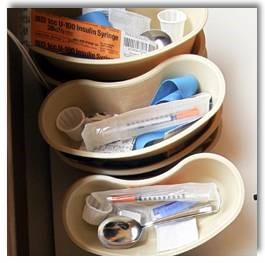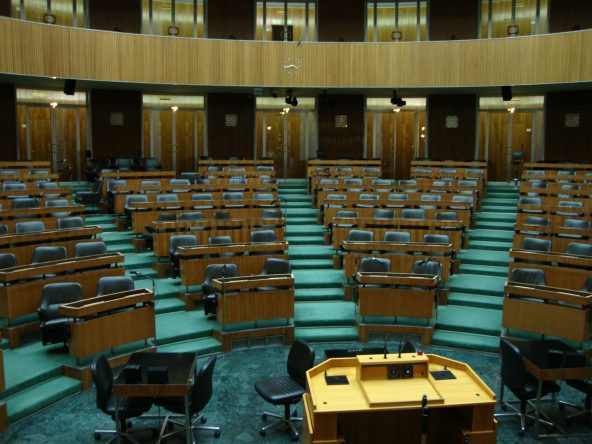This post is also available in: Português (Portuguese (Brazil))
Many times, the International agreements around illicit drugs are mentioned to justify that a particular harm reduction policy or activity cannot occur. But to what extent is this true?
When harm reduction programs started distributing needles and syringes to protect people who inject drugs from getting/spreading blood-borne diseases such as HIV, for instance, this was interpreted as incentivising drug use. I remember being in Brazil when outreach workers had to carry an official paper explaining their work so to show to authorities (usually the police) when approached. Many had their backpacks with syringes confiscated or destroyed. Others had to spend hours or a night at the police station, before being able to convince authorities that it was about prevention, not incentivising drug use. This still happens in many countries, and not only with syringes but also with crack or meth pipes or with Naloxone.
The fact that this does not happen in every country which ratifies these treaties, or even that signatory counties have different regulations, tells us that many things are a matter of interpretation, and there is always scope for freedom for developing a differentiated national policy. Let’s dig into it.
The three most important UN Conventions in force concerning drugs are:
- The 1961 Single Convention on Narcotic Drugs, as amended by the 1972 Protocol;
- The 1971 Convention on Psychotropic Substances;
- The 1988 Convention against Illicit Traffic in Narcotic Drugs and Psychotropic Substances
Now, how these regulations can be interpreted regarding a harm reduction approach?
 Possession & purchase for personal consumption: According to the UN treaties, possession for trafficking should be criminalised. The 1961 convention does not oblige criminalisation of possession or purchase for personal use. Since the 1988 Convention, however, criminalisation of possession, purchase and cultivation for personal consumption are made obligatory. Which is good to stress is that NO convention obliges to impose imprisonment for possession for personal use (!). Countries can apply administrative sanctions in this case.
Possession & purchase for personal consumption: According to the UN treaties, possession for trafficking should be criminalised. The 1961 convention does not oblige criminalisation of possession or purchase for personal use. Since the 1988 Convention, however, criminalisation of possession, purchase and cultivation for personal consumption are made obligatory. Which is good to stress is that NO convention obliges to impose imprisonment for possession for personal use (!). Countries can apply administrative sanctions in this case.
Possession of equipment to use drugs: There is no obligation to confiscate equipment to use drugs. Users, thus, are not prohibited from obtaining sterile equipment. Article 37 of the 1961 convention states that “Any drugs, substances and equipment used in or intended for the commission of any of the offences, referred to in article 36, shall be liable to seizure and confiscation”. Article 36, however, does not mention equipment for drug use, but for “cultivation, production, manufacture, extraction, preparation, possession, offering, offering for sale, distribution, purchase, sale, delivery on any terms whatsoever, brokerage, dispatch, dispatch in transit, transport, importation and exportation of drugs”.
Exchange and distribution of needles and syringes: In theory, they violate the convention but based on conventions’ preambles, governments can implement programs for public health sake (prevent the spread of viruses). Article 38 of the 1961 Convention states that “The Parties shall give special attention to and take all practicable measures for the prevention of abuse of drugs…. Article 3, paragraph 1 (c) (iii) of 1988 Convention states as a criminal offence “Publicly inciting or inducing others, by any means, to commit any of the offences established in accordance with this article or to use narcotic drugs or psychotropic substances illicitly”. However, convention’s preambles express general concern with public health and welfare of humankind.
 Treatment: The importance of treatment is recognised, and the choice of how to implement it is left to the Member States. “All practicable measures” are possible. The Resolution II of UN Conference for the adoption of the 1961 Single Convention shows, however, a focus on inpatient and abstinence driven treatment. It says that “…one of the most effective methods of treatment for addiction is treatment in a hospital institution having a drug free atmosphere”. Bad point! Even then, it does not exclude other measures such as those based on harm reduction.
Treatment: The importance of treatment is recognised, and the choice of how to implement it is left to the Member States. “All practicable measures” are possible. The Resolution II of UN Conference for the adoption of the 1961 Single Convention shows, however, a focus on inpatient and abstinence driven treatment. It says that “…one of the most effective methods of treatment for addiction is treatment in a hospital institution having a drug free atmosphere”. Bad point! Even then, it does not exclude other measures such as those based on harm reduction.
Heroin prescription & methadone maintenance: Both can be allowed within the framework of permitting drug use for “medical and scientific purposes”. Even though they cannot be prohibited from a legal point of view, governments still may reach different conclusions on what “legitimate medical and scientific purposes.” 
Drug Consumption Rooms: There is no clear guidance. On the one hand, they infringe some provisions in Conventions regarding possession of drugs, but on the other, possession and consumption are not necessarily criminalised. Many countries in Europe and some in the Americas have Drug Consumption rooms. Here you can find a map, which includes mobile rooms and places where it is under discussion.
Drug Checking: There is a dubious situation here. On the one hand, they contravene the Conventions for tolerating illicit drug use and because providing information and advice concerning drugs can be considered as public incitement or inducement to use drugs illicitly (prohibited in 1988 Convention). On the other hand, testing drugs could fall under “medical and scientific purposes” since they test the exact composition of drugs and can monitor the market. It depends, thus, on how governments are willing to see it.
 Non-medical and recreational use of cannabis: It is not obligatory to criminalise recreational use of marijuana, but given the limitation to scientific and medical purposes, there is no room to legalize recreational use. I know, you are asking yourself: how was this done by the US? Or Uruguay? Or Canada? They did break the treaty. Check the links and this briefing paper to find out how.
Non-medical and recreational use of cannabis: It is not obligatory to criminalise recreational use of marijuana, but given the limitation to scientific and medical purposes, there is no room to legalize recreational use. I know, you are asking yourself: how was this done by the US? Or Uruguay? Or Canada? They did break the treaty. Check the links and this briefing paper to find out how.
Finally, if people commit an offence, imposing sanctions is left to the domestic law of Country Members, each one can choose how to deal with the implementation of sanctions, levels of punishment, and implementation of sanctions. In the UN Conventions, there is room for alternative measures such as treatment, education, aftercare, rehabilitation and social reintegration for conviction or punishment. There is plenty of room to elaborate and implement these measures according to local needs. At the prosecution level, there is considerable room for Country Members to develop their own policy and make use of the expediency principle, if it does not conflict with the spirit of the International Conventions.
Want to know more? Check our source: De Ruyver, B., Vermeulen, G., Vander Beken, T., Vander Laenen, F., & Geenens, K. (2002). Multidisciplinary drug policies and the UN drug treaties. Antwerpen/Apeldoorn: Maklu.
Found it interesting or have a comment? Let us know.


